Create cozy comfort or dramatic impact with natural lighting and statement fixtures.
How you light a home can make or break your project’s overall look, but with so many factors at play in every project, it’s easy to see how this crucial component can be overlooked.
Put simply, illumination is making something visible or bright by shining light on it. The sun, light fixtures, etc. can serve as light sources. Applying the following simple lighting tips will pay off for you in the end.

MAKE A STATEMENT
There are thousands of lighting fixtures to choose from—don’t be afraid to make a bold statement. Keep in mind, however, that because light fixtures are an element of a home’s design, they need to complement the style of a home, creating a desirable ambience and supporting specific tasks. Artwork, fireplaces, and even strategically painted accent walls can benefit from being properly lit, for example. Placing a wall reading light over the head of a bed frame or centering a large chandelier in the middle of a great room, primary bedroom, or bath will help to create interest or drama depending on the feeling you wish achieve.
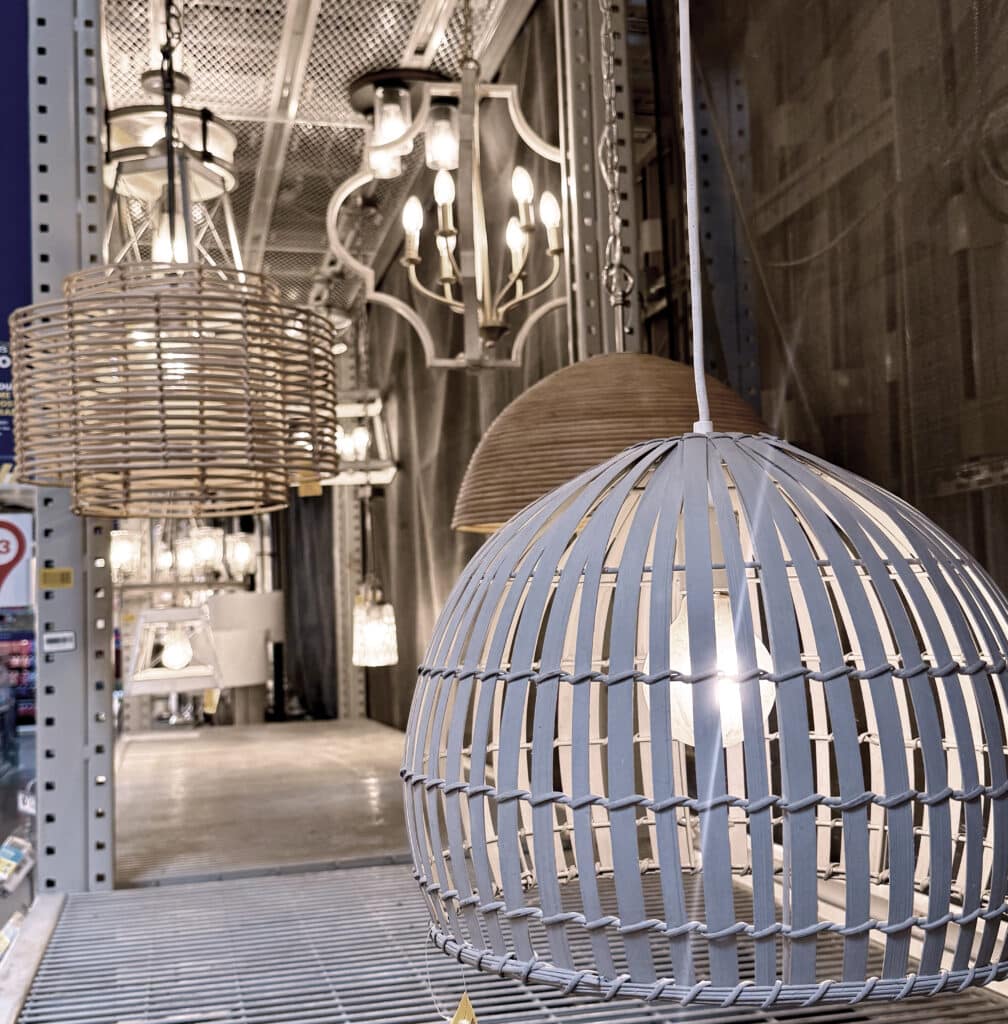
LIGHTING AT DIFFERENT LEVELS
Gone are the days when rooms featured a single light fixture. Yes, most rooms do still have a hanging light fixture, but strategically adding wall lights and can lights, for example, can create interest and force the eye to work its way around a space.
Lighting at various levels or angles (often referred to as “layered” lighting”) creates a balanced space, adding warmth and functionality to any room. Typically layered lighting is achieved using a combination of ambient, task, and accent lighting.
Because a house is to be lived in more than it is to be looked at it, it is important not to focus too much on ambient light. Ambient lighting is the primary source of lighting in a room, creating overall illumination. Focusing too much on this type of lighting results in “dead corners” the light doesn’t reach. Not lighting these corners detracts from your room’s aesthetics and even functionality.
One way to avoid dead corners is to add can lighting close to the walls, allowing that light to splash alongside the wall itself. Can lights also give the room a sense of depth as it takes away the dead corners. Also known as “recessed lighting” or “down lights,” can lights are installed flush in the ceiling.
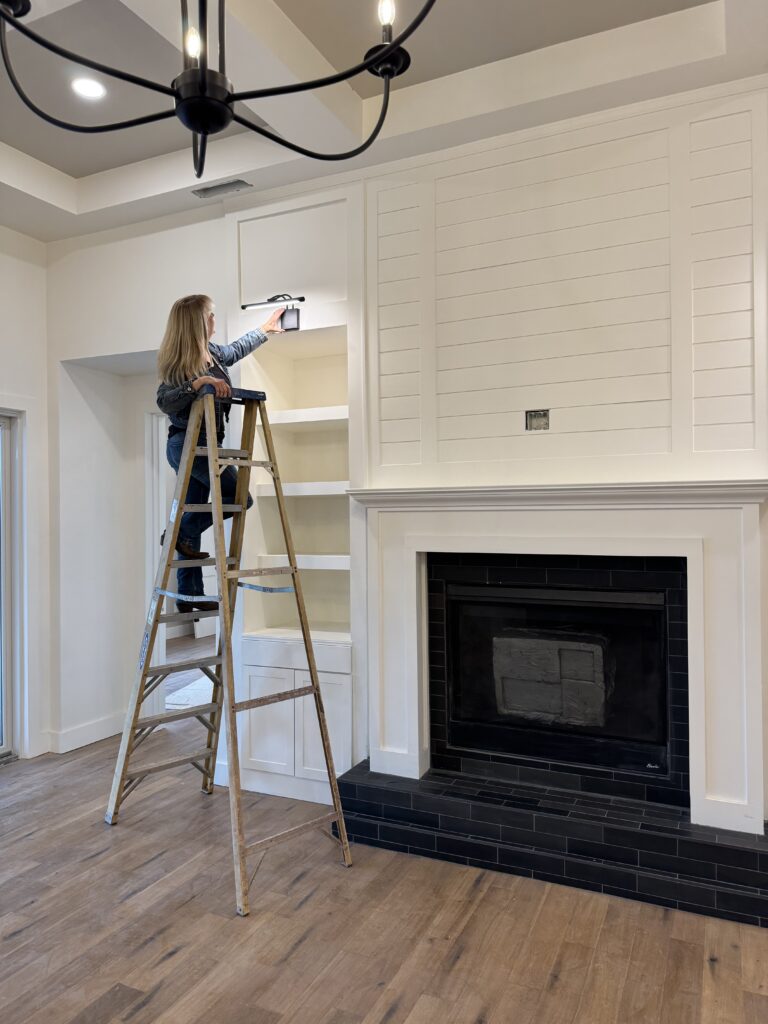
HEIGHT CONSIDERATIONS
The height at which you hang your light fixtures impacts a room’s overall look. Pendant lighting, for example, is a “go to” for kitchen island lighting. But they are effective only if you hang the pendants at the correct height. Hanging them too low can create situations in which you are forced to work around them or try to see around them. On the other hand, hanging them too high will make them less noticeable and less effective as a source of light for the island.
There are sets of rules to follow when it comes to hanging lights for each room. You can find most of these standards by searching online.
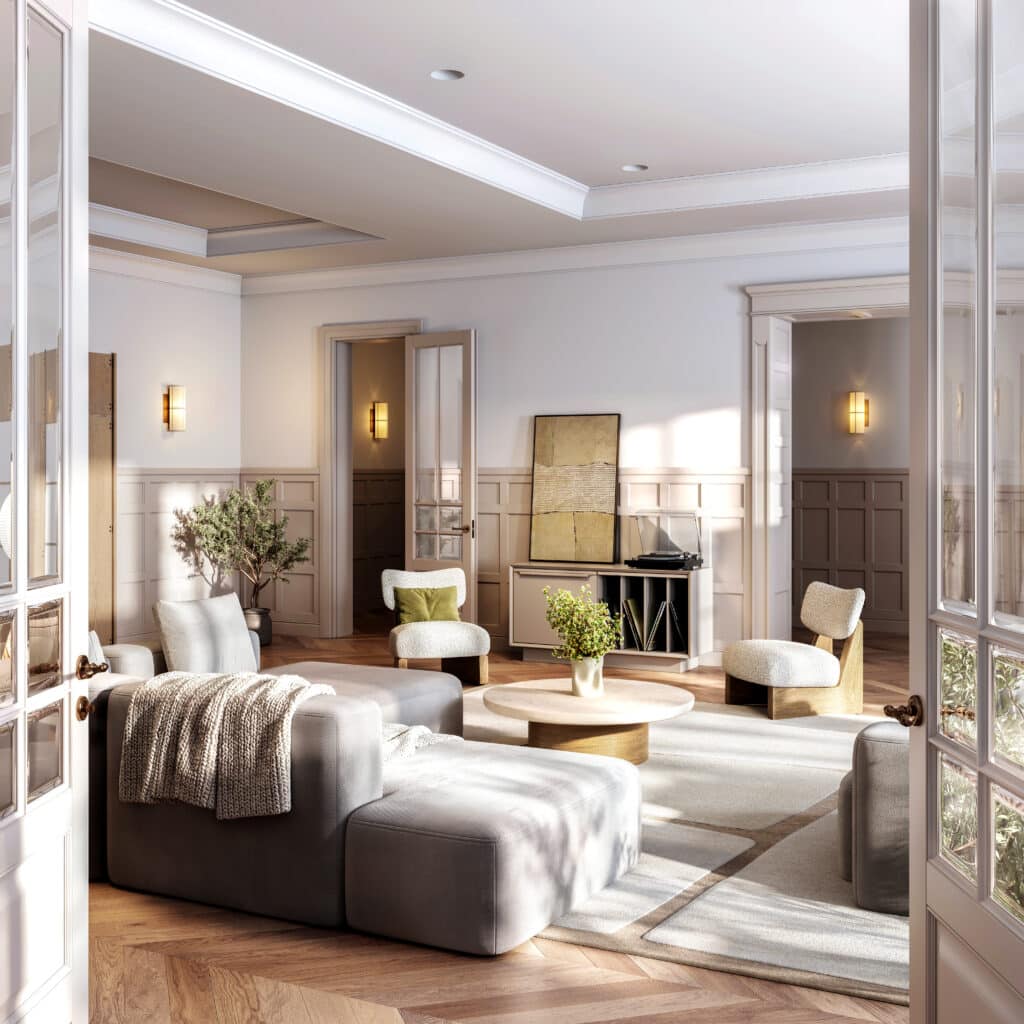
COLOR AND INTENSITY
One area most do not pay close attention to is a light’s intensity and its color. Light bulbs come in cool and warm colors, and the color you choose for each room affects how the room feels.
Cool-colored bulbs tend to be more invigorating, making them good for rooms requiring high light concentration (e.g., offices, mudrooms, laundry rooms, and other task-oriented rooms)—rooms where clarity, concentration, and alertness are important.
Cooler lighting tends to be more modern, offering a clean, sleek look. Cooler lights also trick your mind into thinking the room feels cooler—that’s why more homes in warmer clients use cooler bulbs to illuminate their homes. Additionally, a cooler light bulb gives the room’s paint color a more blue/gray feel, so choose paint colors keeping in mind the bulb color you will be using.
Warm-colored bulbs are fitting for rooms in which you want to feel relaxed (e.g., great rooms, dining rooms, bedrooms). They provide a soft, inviting glow, creating a cozy and comfortable ambience. These bulbs are preferred for most residential projects because they give an interior a more intimate and welcoming feel. Warm lighting also helps to create conversation and stimulates the appetite, making it the right lighting for any kitchen.
Since warmer-colored bulbs give off a more yellow/orange hue, they will enhance but also intensify colors with yellow undertones. This lighting is a great choice for interiors that have a lot of woodwork—it makes the wood feel warmer and richer.
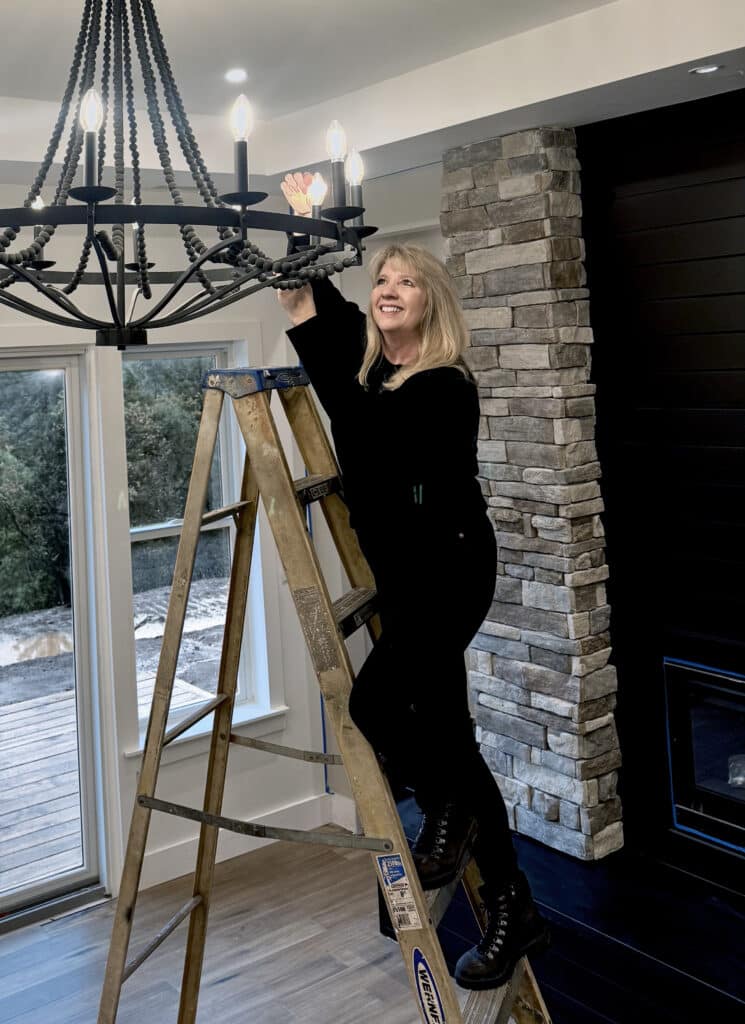
BUY LIGHTS WITH A PURPOSE
Try not to buy light fixtures just because you like the way they look in the store. Lighting serves a purpose: to illuminate areas, not just for aesthetic purposes. Of course, we want beautiful light fixtures, and how they function and serve a room bring out their beauty.
Although the light fixtures you use throughout your house should be purchased to give the house a sense of “cohesiveness,” each fixture must be selected to enhance the room it will be used in. It is vitally important to understand the use of each room as you make these selections. For example, given the trend toward more open floor plans, keep your choice interesting by using different shapes and scale yet still choosing fixtures that work together.
BETTER THAN AVERAGE
Make rooms fun and interesting by thinking outside your average hanging or wall light. Adding dimmers to can lights or hanging lights can help you control the amount of light in a room. For example, you can change the mood of a room by simply dimming the lights. Or, you can use spotlights to accent certain design elements, light an accent wall, or highlight artwork. Consider using museum lighting to highlight artwork or even to accent a bookcase.
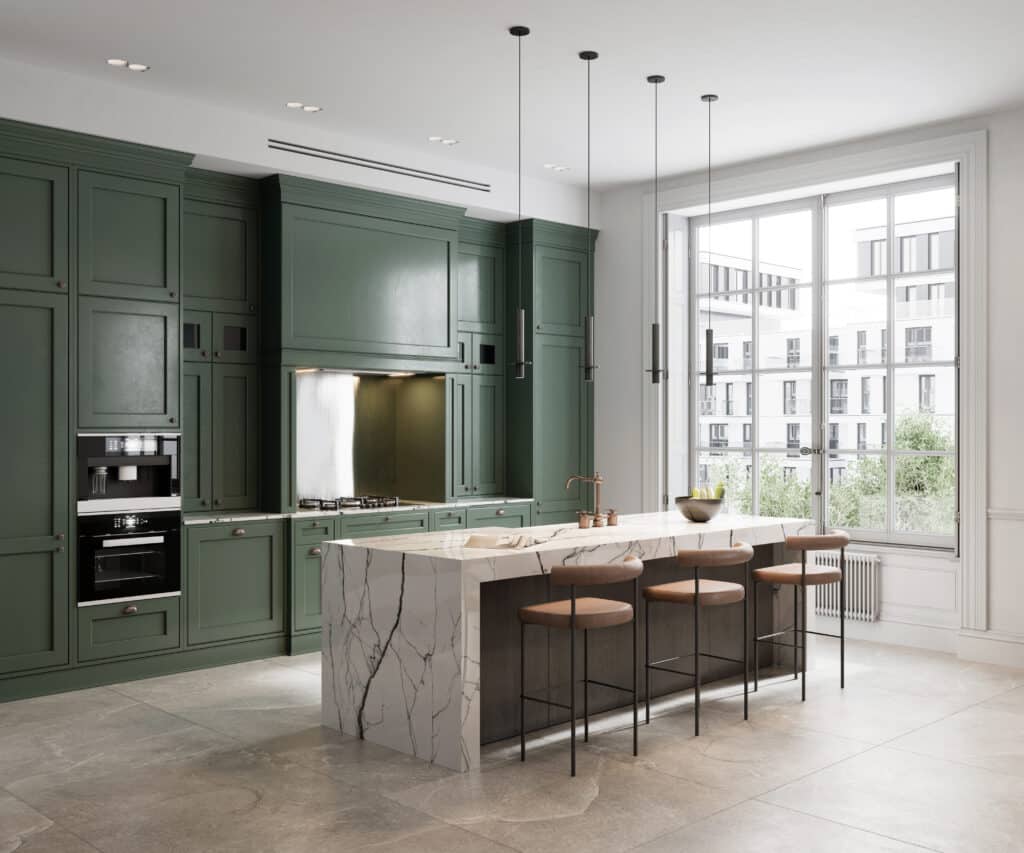
NATURAL SUNLIGHT
It’s hard to talk about illuminating a room without giving a shout out to the sun. If you want to invigorate a room, focus on getting more sunlight into the room. Sunlight makes a space look fresh and helps it feel warm and cozy. There are several ways to add natural sunlight to your next project.
ADD MORE WINDOWS. If possible, add more windows. Consider maximizing the size of each window to catch more of the sun’s rays.
WINDOW PLACEMENT. Place windows strategically to capture the most sunlight throughout the day. Before making your window purchase, observe where the sun hits each room during the day.
GLASS DOORS. Adding glass doors can have a big impact on any interior. Or, consider switching out existing solid wood doors for glass ones. Patios, balconies, and decks cry out for glass doors—the glass makes the areas more interesting and inviting for potential buyers. In addition, when you add glass doors, you invite the outside in and vice versa.
Also consider adding transom windows above the door if the ceiling height permits. They add more glass for even more natural lighting!
SKYLIGHTS/SUN TUBES. Skylights and sun tubes do not work well in all homes. Using them can make your project feel old and dated. They can also cause issues over time with leaking because they are installed in the ceiling. However, if they are your only means to get natural sunlight in the interior of a project, use them. Natural sunlight is important to humans, plants, and animals, so using any means to bring it inside is a must.
REFLECTING AND AMPLIFYING LIGHT
Many interior surfaces help to reflect and amplify light. For example, using metal accents and glossy finishes such as polished countertops moves the sunlight around the room.
Light-colored flooring reflects sunlight instead of absorbing it like darker flooring will do. Also consider strategically placing mirrors in rooms and across from windows to reflect light around the room.
Lighter-colored paints help reflect light instead of soaking it up. Even the paint’s sheen helps to either reflect or restrict sunlight from moving around a room. Also, use either sheer or at least lightweight window treatments. Heavy drapes take the life out of any room by keeping much of the sunlight from getting through. And, don’t forget that keeping windows clear and clean from any type of dirt or debris allows more light through.
You shouldn’t consider a room’s lighting as something that just has to get done. Think of it as the fun part of your project that can and will enhance your project’s overall look if you put time and effort into it. Get creative with your approach to lighting up your next project—you may just surprise yourself!.

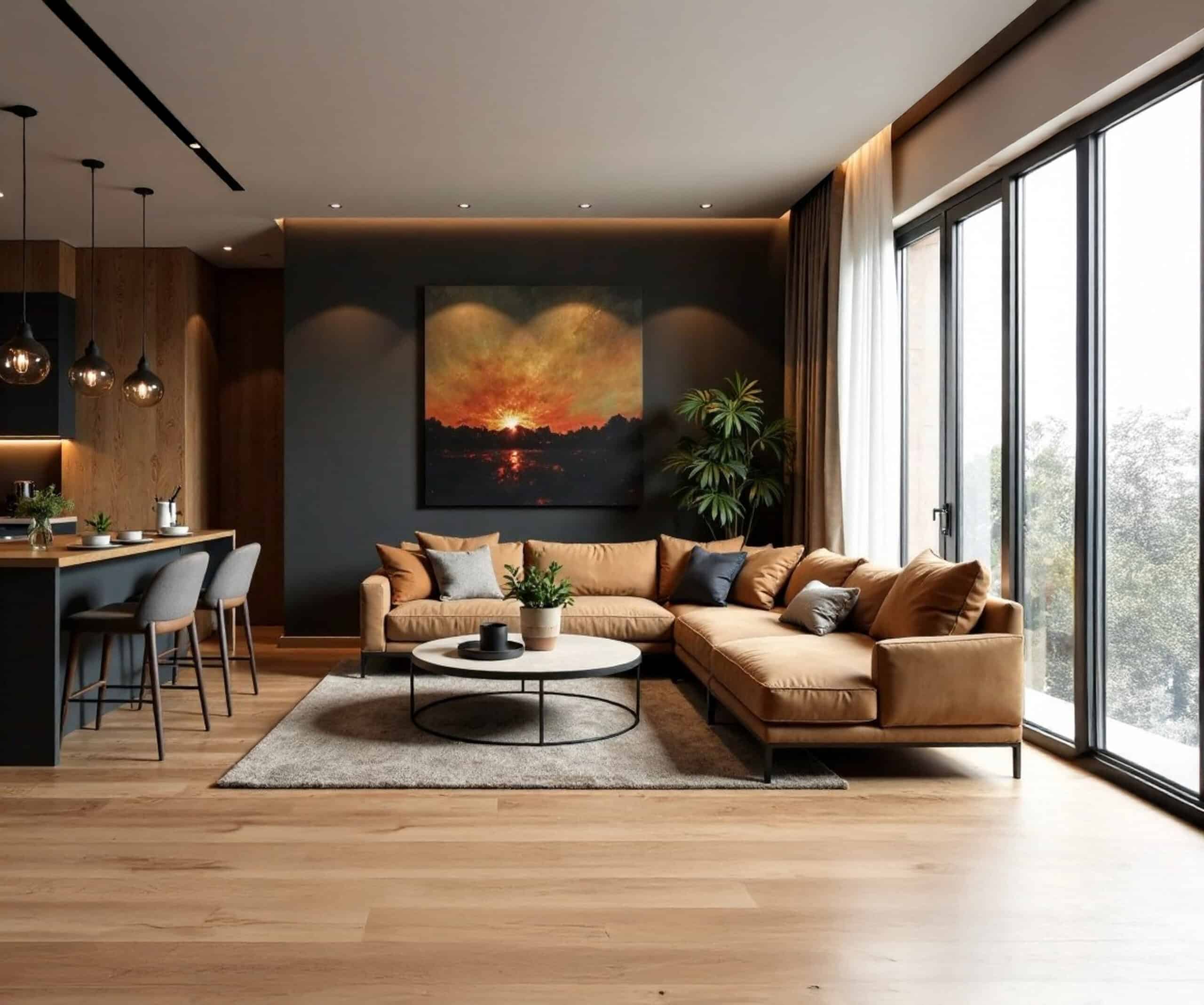



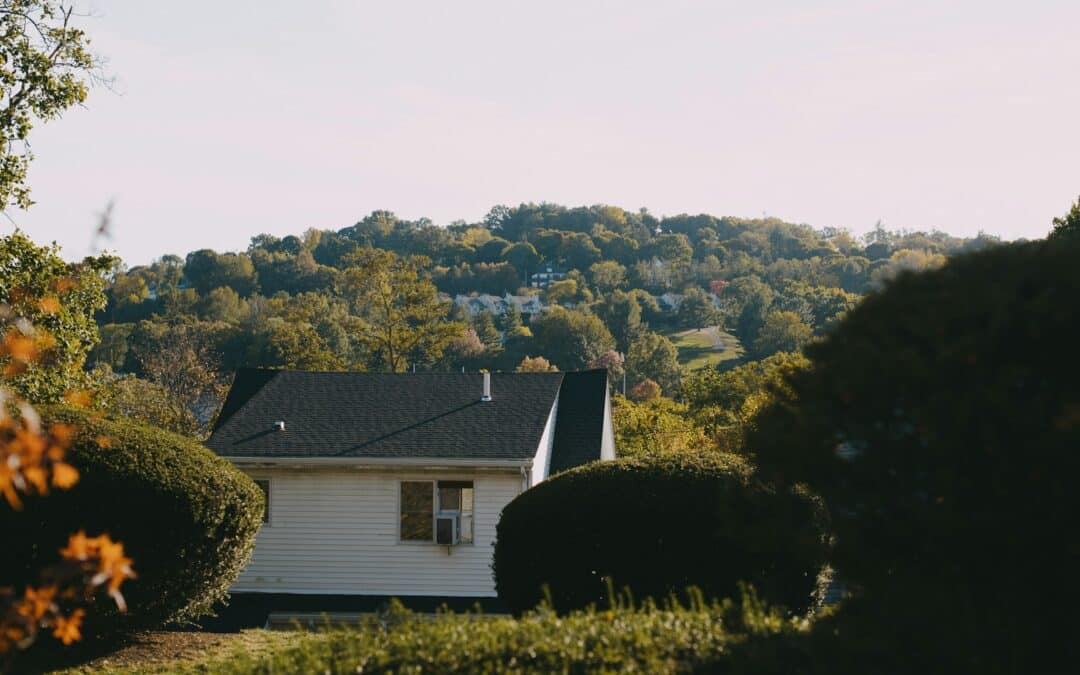


















0 Comments